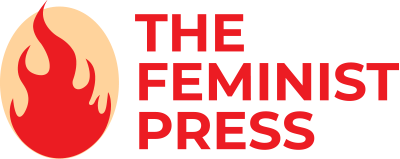#ThrowbackThursday: LIFE IN THE IRON MILLS
This fall, our archival intern Monika Zaleska will offer a glimpse back into FP’s collection, using correspondence, documents, and clips from our extensive archive. Monika is a PhD student in the CUNY Graduate Center’s Comparative Literature Program, and is working with FP through a grant from Publics Lab.
You can follow her on Twitter at @myszka_mz and check out her weekly posts here and on the FP instagram.
Back to FP’s Beginnings
One of the most rewarding, jarring things about looking back in FP’s archive has been confronting our lapsed newspaper culture. Looking over clippings from the Kansas City Star and from Sioux City, Iowa, carefully cut out, pasted, and highlighted with notable blurbs is a flashback to publishing as it once existed—all on paper.
Everything was analogue back in the ‘70s when Feminist Press published its first “forgotten classic” by a woman writer. Life in the Iron Mills was originally published anonymously in the Atlantic Monthly in 1861, but its author, Rebecca Harding Davis, faded from the literary world soon after she stopped publishing. Tillie Olsen and Feminist Press revived and reprinted Life in the Iron Mills, adding additional stories and criticism to the expanded volume into the 1980s.
In 2020, FP revisited the work again for the 50th anniversary of the press, adding a new foreword by journalist Kim Kelly. Kelly says that Harding Davis, “writes about [workers] and the proletarian struggle with such compassion and depth of insight that it’s hard to believe she was merely watching from the window,” a reference to the comparative comfort the storyteller was raised in.
Life in the Iron Mills is one of the first works of American realism, describing the disastrous working and living conditions of immigrant laborers in West Virginia. A journalist, activist, and prolific writer, Harding Davis was admired by contemporaries such as Nathaniel Hawthorn, Ralph Waldo Emerson, and Harriet Beecher Stowe.
In the ‘70s, Olsen and other feminist critics considered Life in the Iron Mills a groundbreaking portrayal of American labor by a forgotten woman writer. At the time of its initial publication, it was considered “too real for the genteel” readers of the Atlantic Monthly, as stated by a 1973 “Books of the Day” column of the Kansas City Star.
I’ve taught Harding Davis in my own Brooklyn College course on “Literature and Labor,” but paging through FP’s files has shown me in the effort it takes to bring a forgotten work back to life: there are disputes about cover design, countless correspondences between Tillie Olsen and FP founder Florence Howe, as well as pasted newspaper clippings like the ones seen in this post. It’s incredible to page through a process that nowadays would take place over email, InDesign, and Dropbox.
As much as an archive reveals, what brings me back to the filing cabinet is the silences: the quarrels that never made it onto the legal pad, the reviews skipped over, and the questions unanswered. As Saidiya Hartman writes in Wayward Lives, Beautiful Experiments, her study of radical Black and queer lives: “[the archive] requires me to speculate, listen intently, read between the lines, attend to the disorder and mess...to honor silence.”
Monika Zaleska is a writer, translator, and PhD student in comparative literature at the CUNY Graduate Center. She has an MFA from Brooklyn College, where she served as fiction editor of The Brooklyn Review, and currently teaches in the English department.




